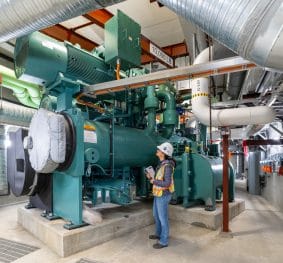
Rapid Hydropower Assessment Model (RHAM)

Project Info
Potential Hydropower Sites
Project Services
Energy
GIS Mapping, Programming & Analysis
Award of Merit, CEBC (2008)
Project Highlights
Mapping the Future of Clean Energy with RHAM
Kerr Wood Leidal’s Rapid Hydropower Assessment Model (RHAM) is a powerful, GIS-based tool designed to evaluate hydropower potential across large areas. As a long-standing renewable energy source, hydropower remains a vital component of today’s electricity generation. RHAM supports developers, utilities, and decision-makers by quickly and efficiently assessing the feasibility of hydropower projects.
This comprehensive software integrates diverse datasets—including topographic, hydrological, and meteorological information—to estimate potential energy production at regular intervals along a stream (e.g., every 30 metres). It accounts for key factors such as streamflow, project head, and year-round water availability.
A key feature of RHAM is its ability to model various hydropower technologies, including run-of-river systems, traditional hydroelectric dams, and pumped-storage facilities. This flexibility enables users to evaluate and compare the performance, advantages, and limitations of different technologies, helping identify the most suitable option for each site.
RHAM’s intuitive interface allows users to visualize data and analysis results, making it easier to identify promising opportunities and potential challenges. This functionality enhances stakeholder communication and supports informed decision-making throughout project development.
In addition, RHAM generates detailed, customizable reports that summarize key findings and recommendations. These reports can support funding applications, regulatory approvals, and other critical project milestones.
RHAM has been applied in diverse hydropower assessments worldwide and has proven to be an effective tool for resource evaluation. In 2022, the model was used to assess run-of-river potential across all Canadian watercourses, generating a database of approximately 225 million points to help prioritize opportunities at a national scale.
As the global demand for clean energy continues to grow, tools like RHAM play a vital role in identifying, evaluating, and unlocking hydropower potential to support sustainable energy development.
Key Contact(s)
Ryan Taylor Branch Manager (Burnaby), GIS Coordinator
Ron Monk Energy Specialist
Stefan Joyce Senior Hydrotechnical Engineer
Mike Homenuke Utility Management Sector Leader











